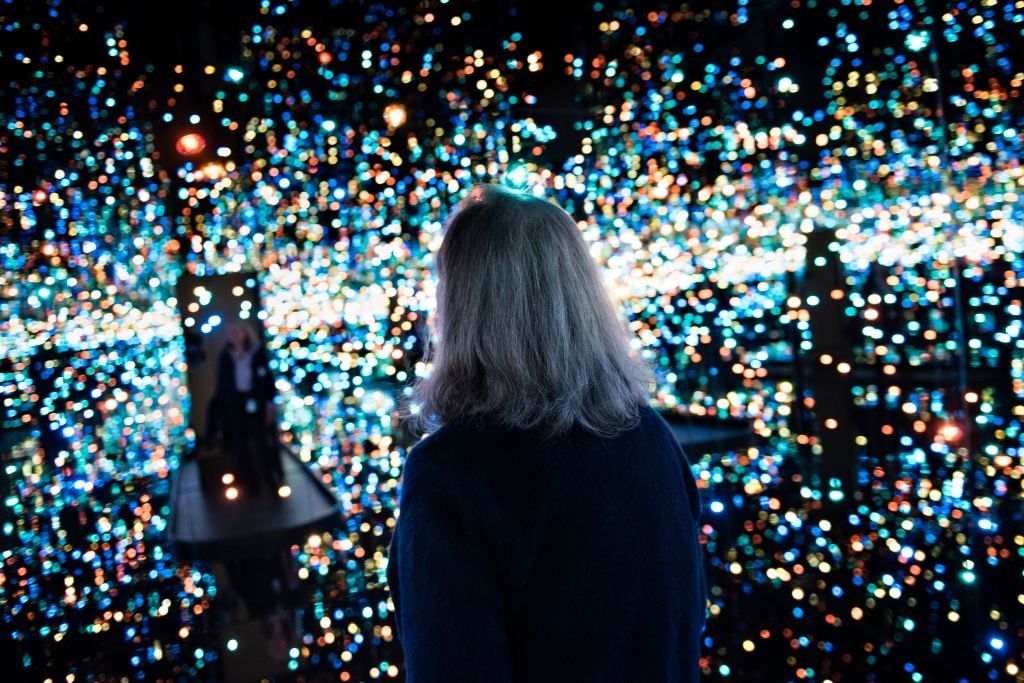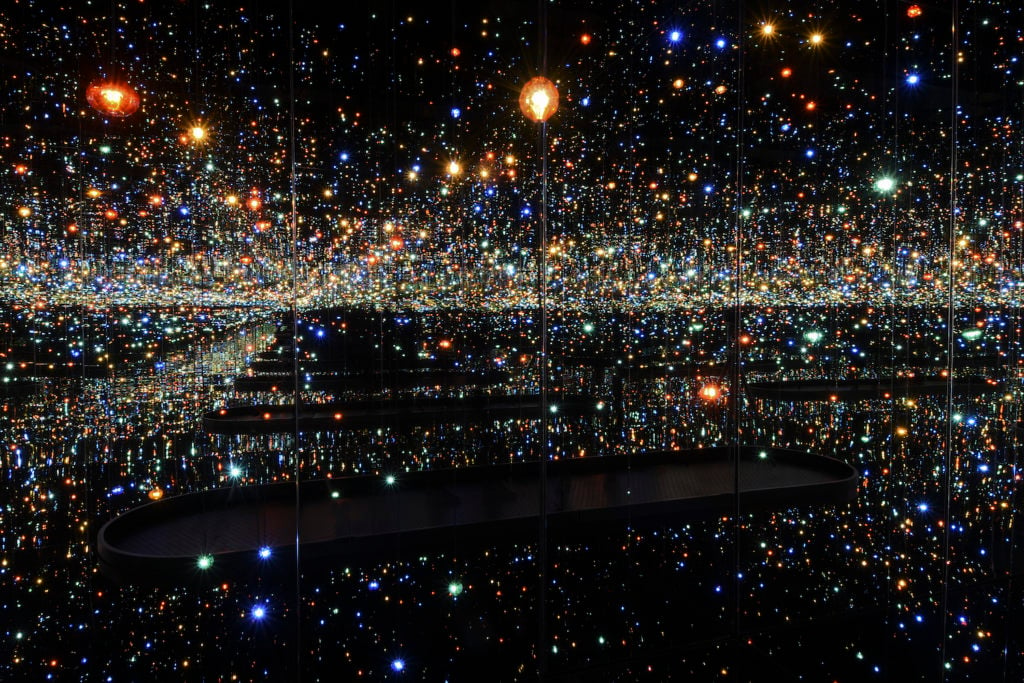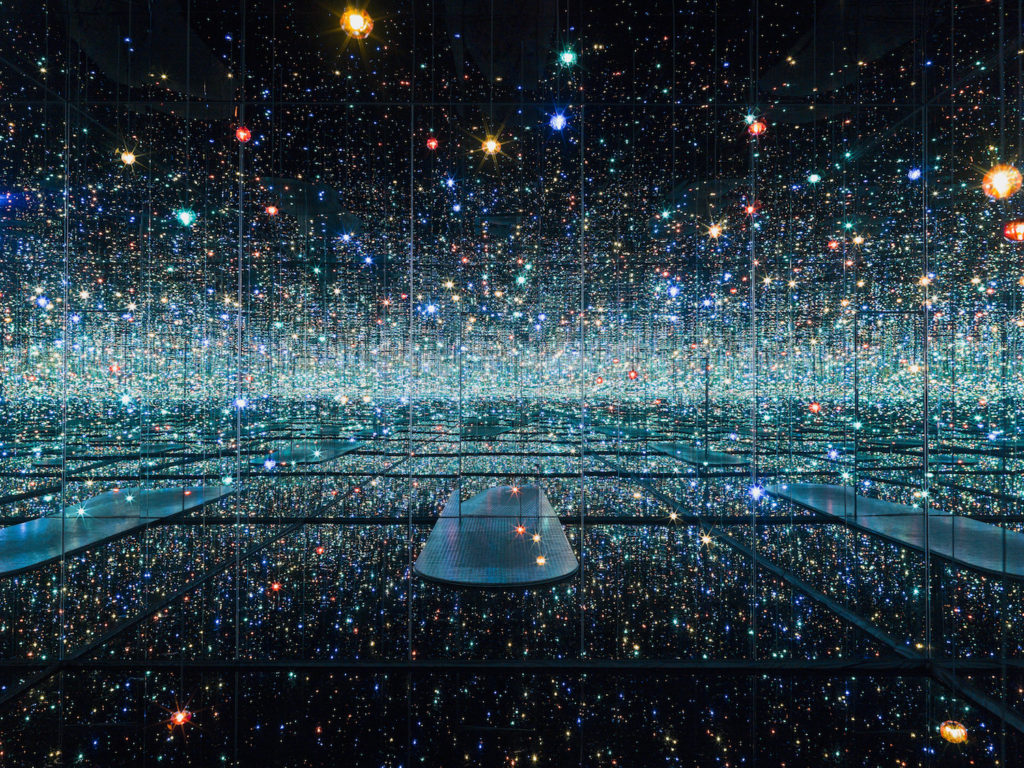Art World
You Can Now Have a Multisensory Experience of a Yayoi Kusama Infinity Room Online, Thanks to the Broad’s ‘Infinity Drone’
The Broad museum in Los Angeles is bringing Kusama's work to a device near you.

The Broad museum in Los Angeles is bringing Kusama's work to a device near you.

Sarah Cascone

Yayoi Kusama’s Infinity Mirrored Room—The Souls of Millions of Light Years Away (2013) is the most popular attraction at the Broad in Los Angeles, drawing almost 2 million viewers since the museum opened in September 2015.
But the twinkling lights of the Japanese artist’s mirrored abyss, along with museums across the country, have been dark since March 13.
Thankfully, the museum has unveiled a new way to experience the artwork online.
Organized by Ed Patuto, the museum’s director of audience engagement, and Darin Klein, associate director of events and programs, a new Instagram TV series pairs footage of Kusama’s starry universe with musical selections by LA sound artists and musicians.
The first edition of the project, featuring music by Geneva Skeen, debuted on Monday.
https://www.instagram.com/p/B-NJQ20BIyL/
“Geneva’s music has an ethereal quality and evokes the spiritual aspects of infinity,” Patuto told Artnet News in an email. Moving forward, the project, which aims to bring out the spiritual side of communing with eternity in an Infinity Roomm will feature music drawn from a variety of genres including drone, electronic, ambient, and pop music.
“People experience spirituality in many different ways,” Patuto said. “By bringing in a variety of musical approaches, we hope to provide a range of ways to delve into aspects of Kusama’s work.”
Each week throughout the closure, the museum will release a new track, set to existing footage of the Infinity Room.
“People experience spirituality or practice contemplation in many different ways,” Patuto added. “By bringing in a variety of musical approaches, we hope to provide a range of ways to delve into aspects of Kusama’s work.”

Yayoi Kusama, Infinity Mirrored Room –The Souls of Millions of Light Years Away (2013). Courtesy of David Zwirner, New York. Photo by Cathy Carver, ©Yayoi Kusama.
The project, which is called “Infinite Drone,” is just one of the ways the Broad is adapting its programming to the current health situation; it is also asking local poets to write verses inspired by works in the collection for another project titled “Interplay: Poetry and Art.”
“The success of the Broad’s online programming demonstrates that our audience appreciates new ways to experience artworks other than through traditional didactic engagement,” Patuto said.
It’s no surprise that people at home would welcome the opportunity to escape into one of Kusama’s immersive artworks. The Infinity Rooms often resonate with people, and Kusama’s blockbuster exhibitions—including one that traveled to the Broad—have sold out and drawn huge lines around the world.
But the experience is fundamentally about being physically present in the space (and being able to document it in Instagram-ready photographs). The full effect doesn’t exactly translate to a video shot from a single vantage point.

Yayoi Kusama, Infinity Mirrored Room –The Souls of Millions of Light Years Away (2013). Courtesy of David Zwirner, New York. © Yayoi Kusama.
But there are some advantages to this new way of experiencing Kusama’s work. For one, stepping inside the physical space requires an advance reservation—and then there’s a pesky 45-second time limit.
The first “Infinity Drone” Instagram video is a full 14 minutes long, a rarified experience that you’d never get at the Broad in the flesh.
“Digitally, you can spend more time with it, and pairing it with music adds to the digital experience,” Patuto said. But even he admits the project is only a stop-gap measure until the museum reopens.
“Obviously, the work is meant to be experienced in person,” he said.